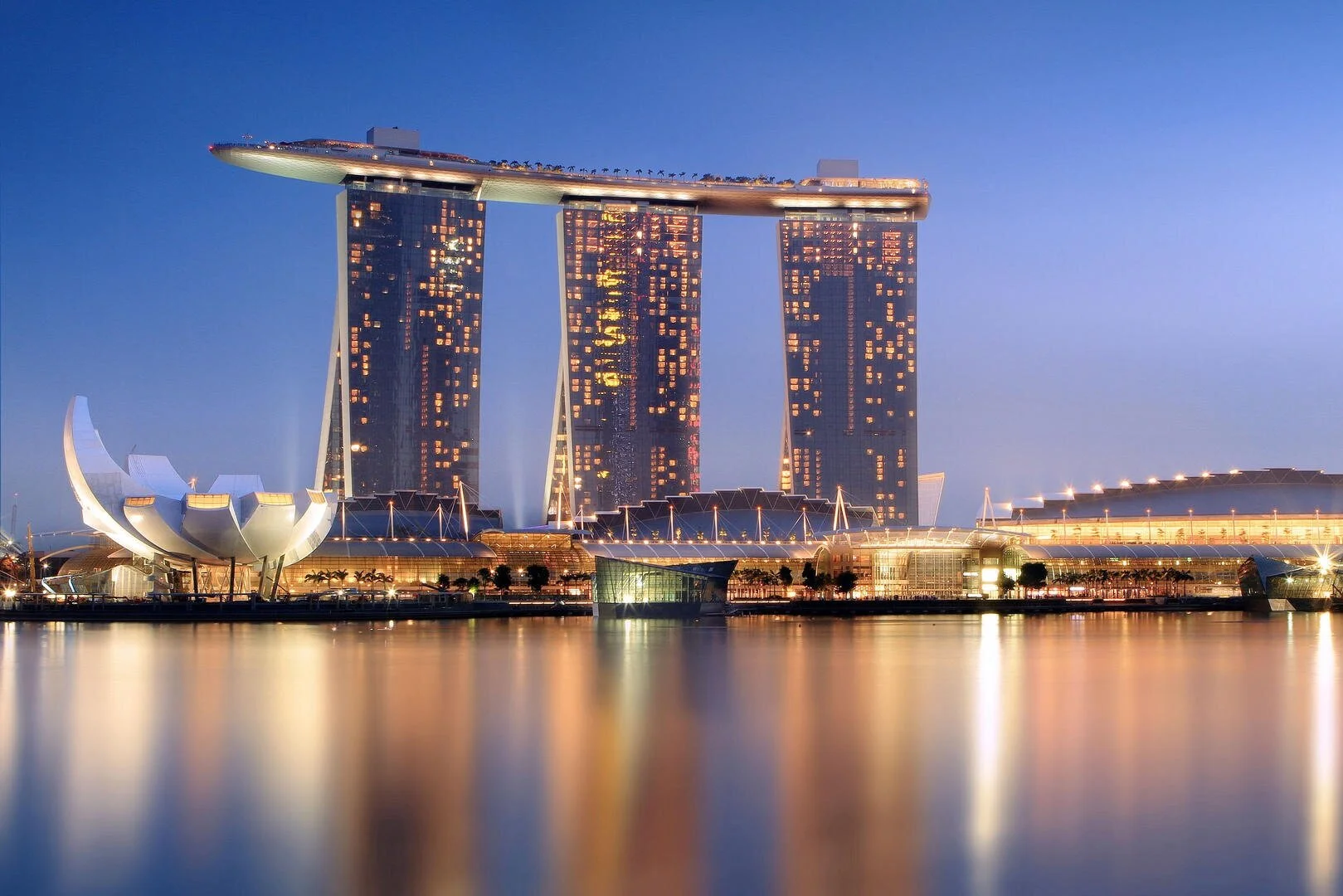In today’s technologically advanced world, it’s no surprise that more companies are making smart building design a top priority. Let’s discuss seven tips to keep in mind when designing a smart building.
All tagged urban design
Designing Structures That Become Local Landmarks
With proper design, a structure can become an icon and a representation of the people it serves. Local landmarks offer advantages in community, tourism, quality of life and navigation. Find out how!
Project Highlight: Marina Bay Sands Hotel
For the control of the curtain tracks’ automation at the Marina Bay Sands Hotel, it was decided to rely on Nice and to use the award-winning NiceWay modular transmitters.
Do You Need a Generator for Your Construction Site?
Here are a few key factors to consider when purchasing a generator.
Project Highlight: Permeable Parking
To satisfy the stormwater requirement, the Presto GEOPAVE gravel pavers were chosen to provide a long-term porous surface for half of the parking area.
Friday Feature - September 20th Edition
In this edition we're showcasing 3D models from Tree Stake Solutions LLC, Public Space Products, Ultrasite, and Eco-Rain Tank Systems of America. We’ve also gathered projects featuring products by Eldorado Stone, Inpro, Inspire by Boral, and Kleer Lumber LLC.
Friday Feature - August 30th Edition
In this edition we're showcasing 3D models from OZCO Building Products, Earthcore Industries, RCP Shelters, Inc., and AVO Fence & Supply, Inc. We’ve also gathered projects featuring products by Eldorado Fireplace Surrounds, Filtrine Manufacturing Company, Garden Arc, and Hufcor, Inc.
Friday Feature - August 23rd Edition
In this edition we're showcasing 3D models from Valor, Pacific Clay, RoLanka International, and Riverside Plastics . We've also gathered projects from Ameristar Security Products, Brandon Industries, Vista Professional Outdoor Lighting & Presto Geosystems.
Friday Feature - August 16th Edition
In this edition we're showcasing 3D models from Ready Access, The G-S Company, RDI Railings, and Urban Racks Bicycle Parking Systems Inc . We've also gathered projects from Ultra Aluminum Mfg. Inc., Hauser Industries Inc., SplashTacular, and Landscape Forms Inc.
Friday Feature - August 2nd Edition
In this edition we're showcasing 3D models from Westminster Teak, TFG Installations, Inc., Wishbone Site Furnishings, and Amantii & Sierra Flame. We've also gathered projects from IntelliDeck, Ameristar Fence Products, Columbia Green, & Invisible Structures, Inc.
Friday Feature - July 26th Edition
In this edition we're showcasing 3D models from A A A Ribbon Bike Rack Company, ISO Clip, Sportworks, and Amereq Inc./CU-Soil Division. We've also gathered projects from Hycrete, Inc., and Folding Sliding Door Canada Ltd.
Friday Feature - July 19th Edition
In this edition we're showcasing 3D models from Anamese Garden & Home, Mid-America Siding Components, and nVent Thermal Management. We've also gathered projects from Planters Unlimited, Stone Yard, Inc., and UltraBaseSystems.
Friday Feature - July 12th Edition
In this edition we're showcasing 3D models from CertainTeed, Most Dependable Fountains Inc, SimTek Fence, and AGF Manufacturing. We've also gathered projects from FieldTurf Commercial, American Hydrotech, Inc., Flecks Systems and Miracle Recreation Equipment Company, Inc .
Friday Feature - June 28th Edition
In this edition we're showcasing 3D models from Clarion Bathware, Brickstop Corporation, and Dabmar Lighting. We've also gathered projects from Superior Recreational Products | Playgrounds, Quad-Lock Building Systems, LUX Architectural Panels, and Synthetic Turf International.
Friday Feature - June 21st Edition
In this edition we're showcasing 3D models from Ametco Manufacturing Corporation, and Total Door Systems We've also gathered projects from Chatfield Green Roofing, Camden Door Controls, Bird Barrier, and Georgia-Pacific Gypsum.
Friday Feature - June 14th Edition
In this edition we're showcasing 3D models and projects from participating manufacturers on CADdetails such as AutoGate, Inc., FUSION DRILLFREE by Carter Architectural Panels Inc., Snapedge, WireWall High Security Fence Systems LLC, Ronstan Tensile Architecture, Williams Stone Company, Inc., Stone Yard Inc., and Sign Bracket Store.
Friday Feature - May 31st Edition
In this edition we're showcasing 3D models from Artistry Hardwood Flooring, Hayward Commercial Aquatics, and Increte Systems, Inc. We've also gathered projects from Acoustics First Corporation, Delgado Stone Distributors, RSF, & Werever Outdoor Cabinets.
Friday Feature - May 24th Edition
In this edition we're showcasing 3D models from Petersen Manufacturing Company, Inc., Simple Shower Solutions, L.A. Steelcraft Products/Aluminum Seating, Rain Bird Corporation. We've also gathered projects from Innovative Building Products, Inc., Surface America, Inc., GT IMPAX, and Fiberon.
Friday Feature - May 17th Edition
In this edition we're showcasing 3D models from Douglas Industries, Dawn Enterprises, and Gail Materials. We've also gathered projects from P + P Artec Inc, SGi Lighting, ShadeFX, and Robinson Iron.
Friday Feature - May 10th Edition
In this edition we're showcasing 3D models from MASA Architectural Canopies, Mansfield Plumbing Products LLC, & Delgado Stone Distributors. We've also gathered projects from Screen Tight, Fortress Fence Products, Forms+Surfaces, & Innovative Concrete Development Corp.





